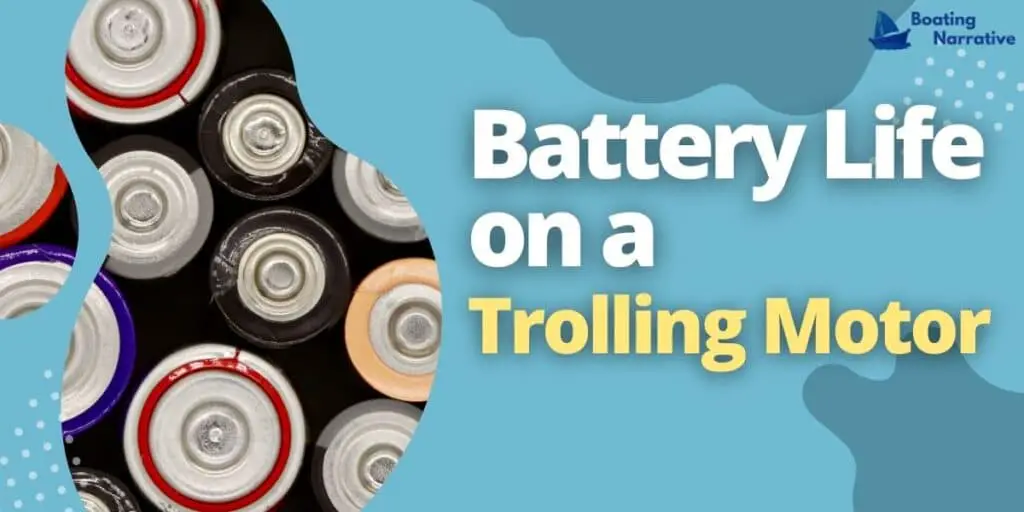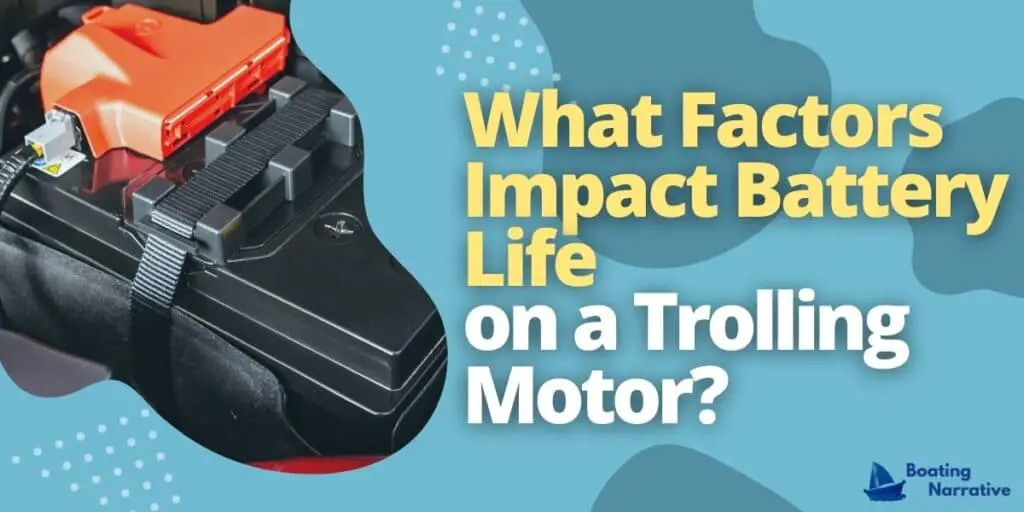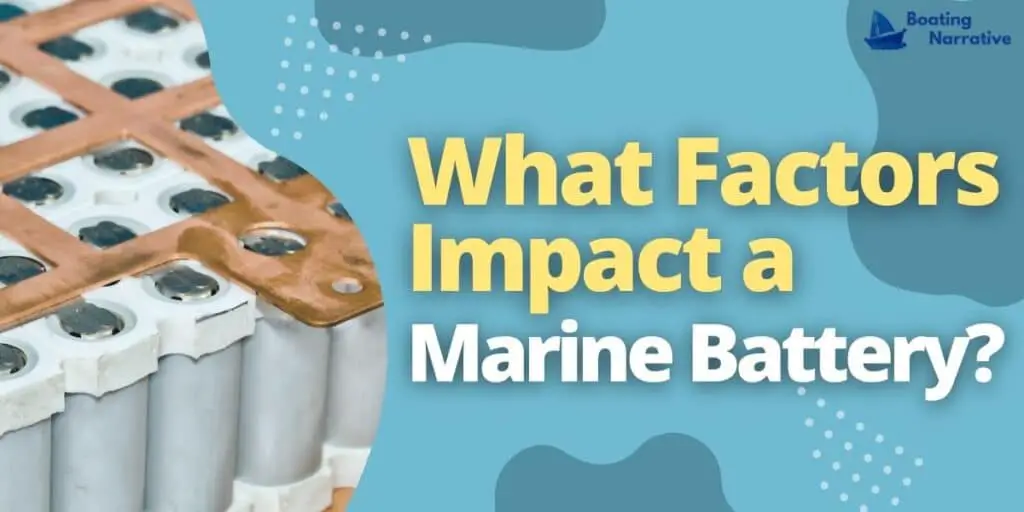It’s essential to know how long a trolling motor battery lasts because you don’t want to run out of power. If you’re planning on trolling all the time, it’s important to know how long a battery lasts because you’ll want to be prepared if you run out of power.
If you’re using a trolling motor, you’ll have to recharge it from time to time. And if your battery is getting low, you’ll have to plug it in every time. But do you know how long a marine battery will last? Or how many miles can you expect to run before you need to replace it?
This blog post will help you figure out how long a marine battery lasts and how long your trolling motor will last.

Here’s How Long A Marine Battery Lasts On A Trolling Motor:
A marine battery will last anywhere from 3 to 5 years. The frequency with which you charge the battery and whether or not you run your trolling motor heavily will affect how long your marine battery lasts.
A marine battery can last for many years with proper care and maintenance. Each battery should include its expected lifespan in the product information, but the average marine battery should last about five years.
Battery Life on a Trolling Motor:

Batteries do come in a wide range of shapes and sizes, but it’s essential to choose the right one when it comes to electric trolling motors. When purchasing a battery for their trolling motor, one has to consider a few factors: the type of battery, the size of the battery, and the number of amps the trolling motor requires.
There are three main types of batteries: lead-acid, nickel-cadmium, and nickel-metal-hydride. Lead-acid batteries are the most common type and are usually the cheapest. They’re also the heaviest and have the shortest battery life.
Nickel-cadmium batteries are more expensive than lead-acid, but they have longer battery life and are less likely to corrode. Nickel-metal-hydride batteries are the most expensive type, but they have the most extended battery life and are environmentally friendly.
The size of the battery also matters. Batteries do vary considerably, from small 9-volt batteries to large 12-volt batteries. It is crucial to pick the correct battery for your trolling motor. The number of amps your trolling motor requires also matters. Most trolling motors require between 6 and 24 amps, so make sure to choose a battery with enough amps.
How Does the Trolling Motor Affect Battery Life?
The most critical component in determining how long a marine battery will last on a trolling motor is the trolling motor itself. The trolling motor is what consumes the most power from the battery. Therefore, the more amps the trolling motor draws, the shorter the battery life will be.
In addition, the voltage of the battery also affects the battery life. The higher the voltage, the more amps the trolling motor will draw. This means that a 12-volt battery will not last as long as a 24-volt battery.
What Factors Impact Battery Life on a Trolling Motor?

In addition to the trolling motor, some other factors can impact battery life. These factors include the type of battery, the weather conditions, the discharge rate, and the internal resistance.
The type of battery is an important factor in determining battery life. There are three types of marine batteries- lead-acid, nickel-cadmium, and lithium-ion. Of these, the lithium-ion battery has the longest lifespan.
The weather conditions also affect battery life. The colder the weather gets, the shorter the battery life will become. This is because the battery will not be able to produce as much power in cold weather.
The discharge rate is another crucial factor. With a higher discharge rate, the battery life will be shortened. This is because a high discharge rate means that the battery is being discharged more quickly.
Internal resistance is the final factor that affects battery life. The higher the internal resistance, the shorter the battery life will be. This is because a high internal resistance means that the battery is not able to produce as much power.
How Long Does a Battery Last on a Trolling Motor?

There is no one definitive answer to these questions. The battery lifespan on a trolling motor depends on a variety of factors, such as the size of the battery, the type of battery, the amps of power the trolling motor draws, and the ideal conditions in which the trolling motor is used.
That said, there are some general things to keep in mind when it comes to batteries and trolling motors. For example, deep cycle batteries are a better choice for trolling motors than standard car batteries, Because these batteries are optimized to deliver a steady flow of power over a longer time period, while car batteries are designed to deliver a lot of power all at once.
Another thing to consider is the amp hour rating of the battery, which is the measure of how much power the battery can deliver over a one-hour period. The higher the amp-hour rating, the longer the battery will last on a trolling motor.
Finally, it’s important to note that the amps of power the trolling motor draw also affect how long the battery will last. The more amps of power the motor draw, the faster the battery will drain.
What If You’re Using a Lead-Acid Battery?
Lead-acid batteries are a type of storage battery that is commonly used in trolling motors. These batteries come in a variety of sizes, and the amp draw of the trolling motor will determine the size of the battery you need. A new trolling motor battery should be able to handle at least the amp draw of the trolling motor.
Lead-acid batteries are susceptible to damage in strong currents and should not be used in water conditions that are too rough. It is important to check the water conditions before using a lead-acid battery in a trolling motor.
What Lifespan Do Marine Battery Manufacturers List For Their Batteries?
Marine battery manufacturers typically list a battery’s lifespan as a number of years, with a few listing the battery’s lifespan in terms of months. The total lifespan of a battery is based on the battery’s run time, the number of times it can be recharged, and the battery’s capacity and size. There are three main types of marine batteries- lead-acid, AGM, and lithium-ion.
Lead-acid batteries are the most common type of marine battery and have a lifespan of 3-5 years. AGM batteries have a lifespan of 8-10 years, and lithium-ion batteries have a lifespan of 5-6 years. It is important to note that the lifespan of a battery is greatly affected by the number of times it is recharged. A battery that is only recharged once will last longer than a battery that is recharged multiple times.
Marine Batteries Replacement Frequency
Most experts agree that most marine batteries need to be replaced every three to four years. One reason for this is that marine battery are often subjected to more wear and tear than other types of batteries.
They are often exposed to saltwater and other environmental factors, which can shorten their lifespan. In addition, most marine batteries are not designed for deep cycle use, meaning that they are not as resilient as other types of batteries when it comes to repeated use.
Finally, marine batteries often require more frequent charging than other types of batteries, which can also shorten their lifespan.
How Big of a Battery Should I Buy For My Trolling Motor?
The size of the battery you need depends on the size of your boat and the amount of thrust your trolling motor requires. With a smaller boat, one can get away with a smaller battery; but if you have a larger boat, you will need a battery with a higher capacity. I
n addition, you will need to consider the amperage of your trolling motor. The higher the amperage, the more power your battery will need to supply.
When shopping for a battery, it is essential to buy one that is specifically designed for trolling motors. Some batteries are marketed as “all-purpose” batteries, but they may not be suitable for use with a trolling motor. It is also important to buy a battery that is compatible with your battery charger.
If you are not sure which battery to buy, you can consult with a battery specialist or trolling motor manufacturer. They can help you choose the right battery for your needs and provide guidance on how to properly care for and store your battery.
When it comes to trolling motors, bigger is not always better. In fact, if you have a larger boat with a more powerful motor, you may actually need a smaller battery. It all depends on the thrust of your motor and the amount of runtime you need.
Factors Impacting A Marine Battery

There are several factors that can impact a marine battery, including reserve capacity, weight, water levels, medium speed, high-quality, wet cell, cranking, hybrid, corrosion, calm water, and top speed.
Reserve capacity is the length of time; in minutes, a battery can provide 25 amps until it is discharged. A battery’s reserve capacity is impacted by its weight, size, and type of battery. For example, a lead-acid battery will have a lower reserve capacity than a lithium-ion battery.
Medium speed is the speed at which a battery can be discharged without damaging it. A battery’s medium speed is impacted by its quality. A high-quality battery will have a higher medium speed than a low-quality battery.
Wet cell batteries are the most common type of marine battery. They are filled with contains a liquid electrolytes and must be maintained regularly. If the sulfuric acid levels are not kept up, the battery can overheat and corrode.
Cranking is the speed at which a motor rotates at sufficient speed. A battery discharge may change with a different cranking speed. Cranking speed is impacted by its hybrid or lead-acid type. A hybrid battery can help higher cranking speed than a lead-acid battery.
Corrosion is a common issue with marine batteries. If the battery is not kept clean, it will corrode and lose its ability to provide a charge.
Calm water is necessary for a marine battery to function properly. A battery that experiences high-speed waves or choppy waters will have difficulty providing a proper discharge.
Top speed is the maximum speed at which a trolling motor can operate. A battery can be discharged at a faster pace when the motor is operating at full speed.
Final Thoughts
There are many different factors that will affect how long a marine battery lasts on a trolling motor. The most important of these factors is the battery’s capacity – or how much power it can store. A battery with a higher capacity will last longer than one with a lower capacity.
Another critical factor is the size of the battery. A larger battery will last longer than a smaller battery. The type of battery is also essential. Some batteries are designed for deep-cycle use, while others are not. The motor run time is also a factor. The longer the motor is running, the more quickly the battery will drain.
Recharging the battery also affects how long it will last. A battery that is recharged regularly will last longer than one that is not. Finally, the type of trolling motor and the accessories that are used with it also play a role in how long the battery will last. A small amount of power drawn from the trolling motor can significantly reduce the battery’s life.

